Pruning + Maintenance
Part 3 of 5
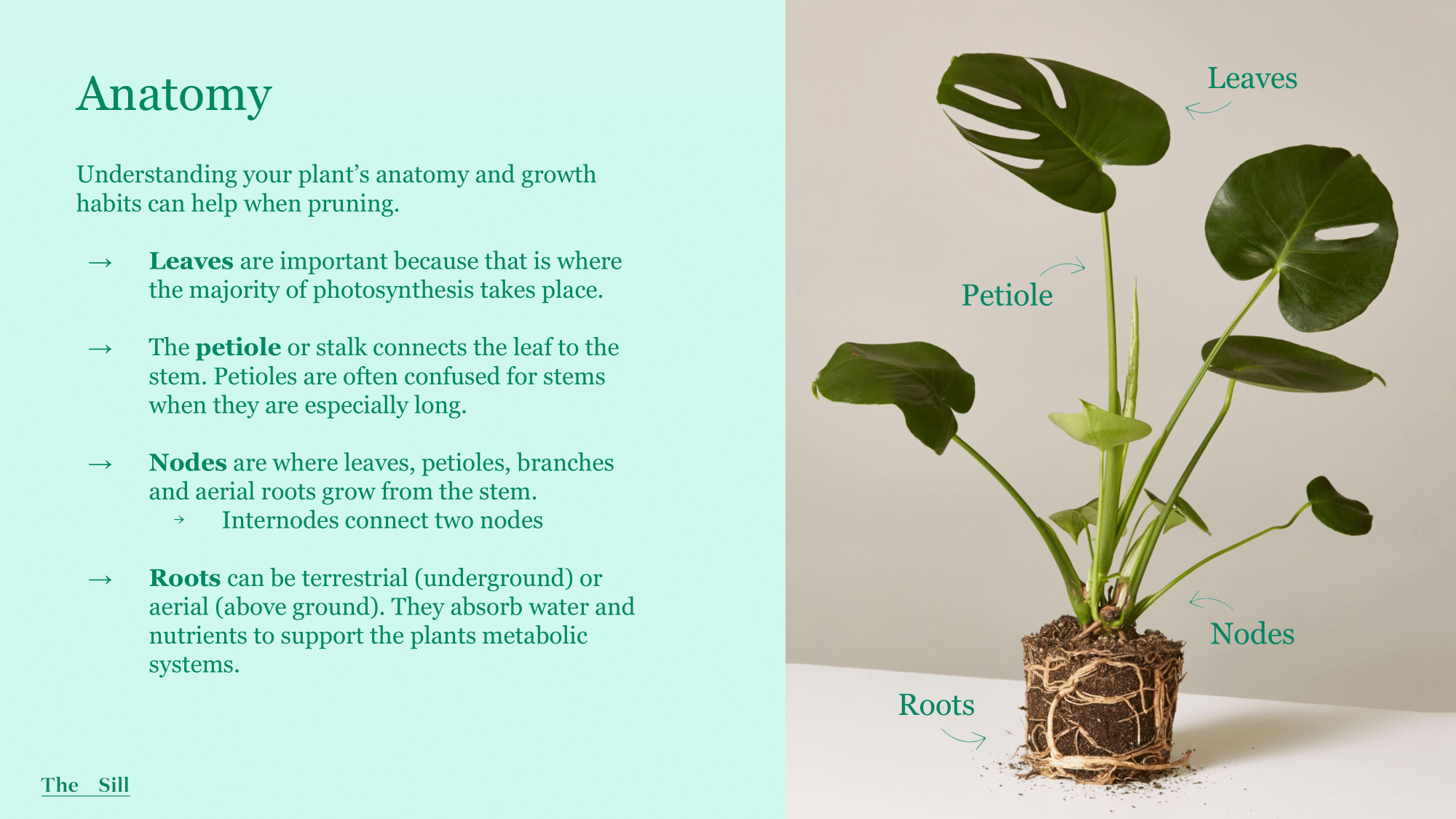
Anatomy
- Stem - Supports leaves & flowers, is also the connective link for mineral and water uptake from the roots to the rest of the plant.
- Petiole - can often be confused with stems when they are especially long, like on the Monstera deliciosa. Keep in mind, not all leaves have petioles and some are instead attached directly to the plants stem (ex. Any plant that has a rosette growth habit, ZZ plant, Orchids, string of bananas, Dracena)
- Internode - space between two leaves
- Roots (terrestrial) - anchors plants, and stores energy also.
Examples of plants with petioles can include: pothos, philo, arrowhead plants, Monstera species, begonias, Maranta/Calathea, silver satin, schefflera.Examples of plants without petioles: echeveria, opuntia cactus, ZZ plant, orchids leaves, Dracaena, string of bananas, bromeliad, Palms.
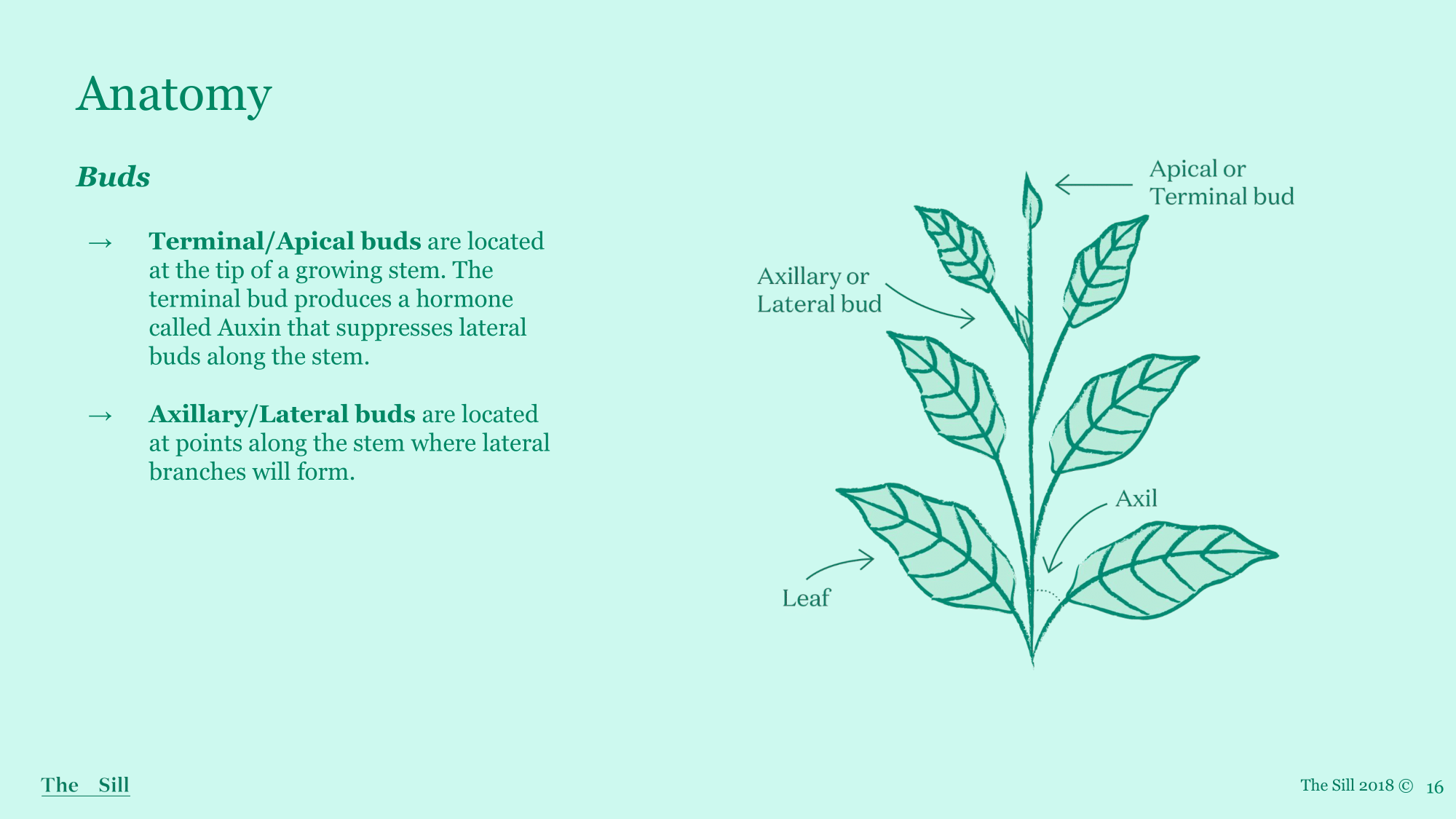
Anatomy (Cont.)
- Terminal/Apical bud - If removed it will encourage lateral dormant buds to form beneath the cut. This helps plants that have apical dominance (those that continuously grow upwards, like Ficus) to branch out and become bushier plants.
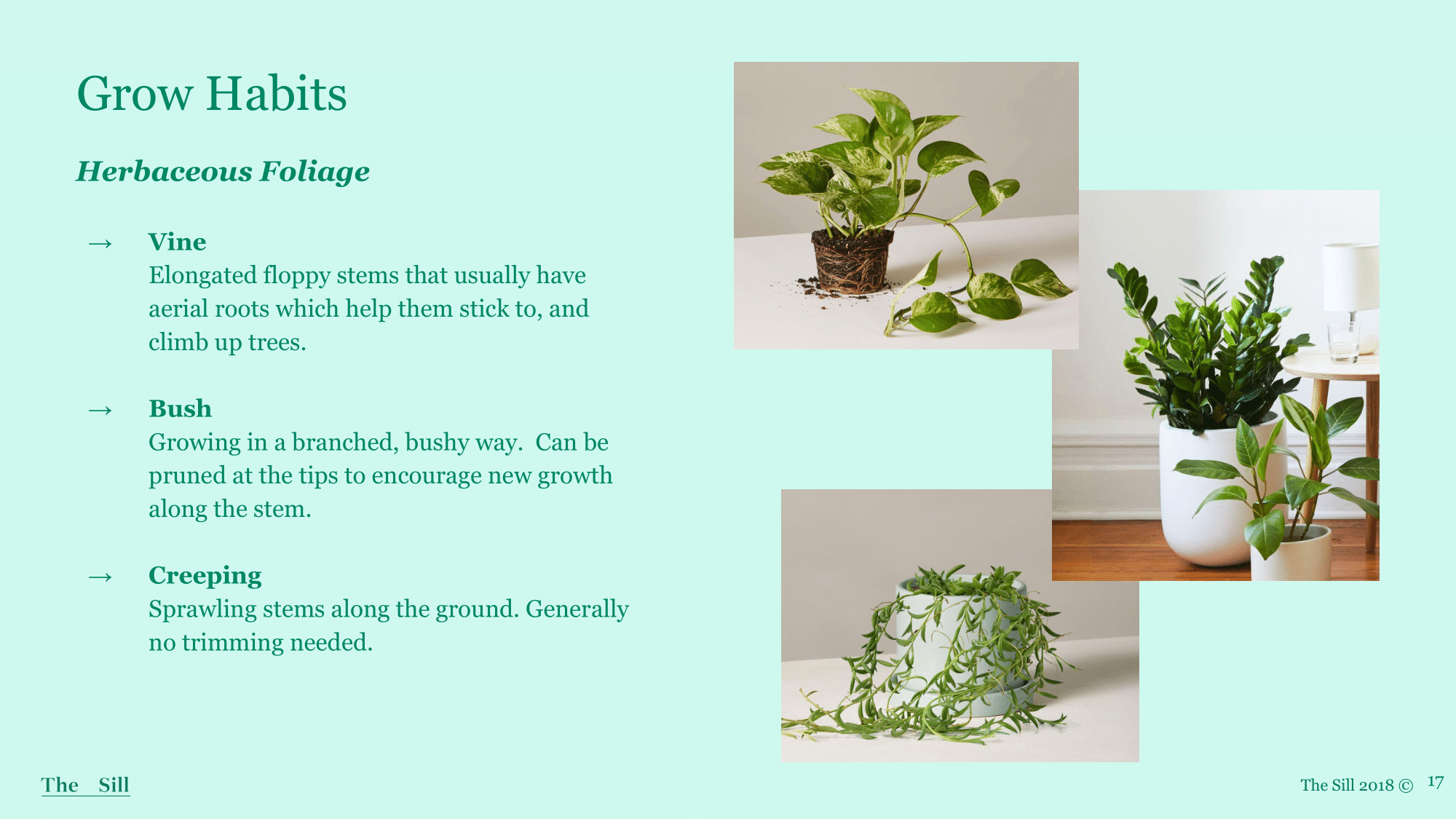
Grow Habits
- Herbaceous - Basically means no woody stems
- Vine - Normally has several points or apical growth which is why “pinching” can help the plant grow more robust
- Creeping - Can prune, however, to take cuttings. Creeping plants can be trained to vine down in a hanging planter, or they can “creep” along the soil.
The difference between Creeping vs Vining plants is that creeping plants grow along the ground in the wild and would be reliant on something (us) to train them to grow upward. Where as vining plants, aka climbers, will grow and find a way up a support themselves.
Examples: Pothos, & Philodendron for vine/bush, and string of bananas or maranta for creeping.
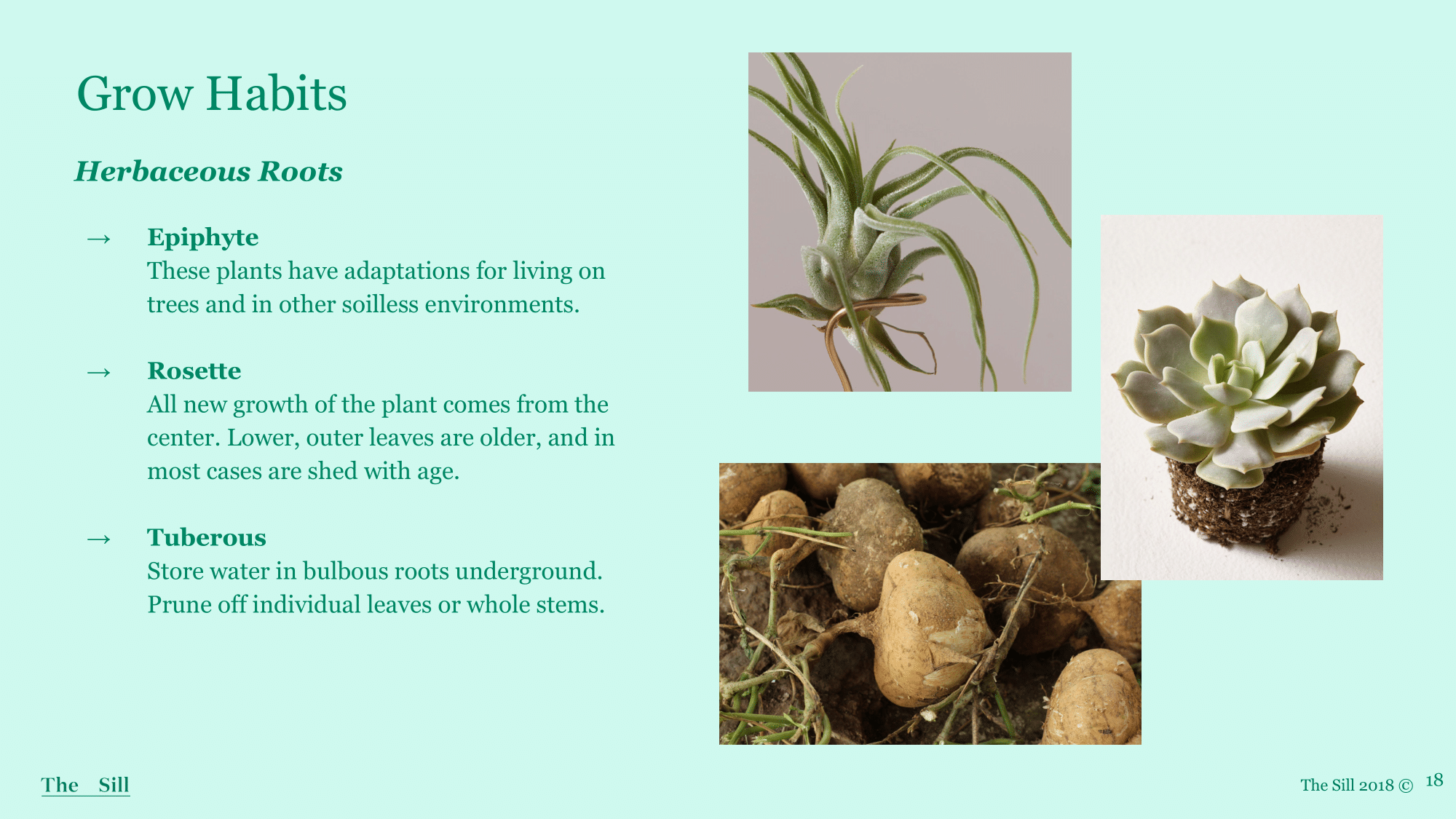
Grow Habits (Cont.)
Many plants do not quite fit into any category completely. For example, Monstera deliciosa tends to have the growth habit of both a bush and a vine. Understanding how plants grow will aid you in your plant care quest.
- Epiphyte - Most don’t require pruning unless to remove dead/lackluster foliage (air plants, bromeliads, orchids)
- Rosette - Generally, no pruning needed unless to remove dead/lackluster foliage.
- Tuberous - Can also propagate underground stems or via root division.
Examples: epiphytes include air plants, bromeliads, stag/birds fern, and even Aroid species that are semi-epiphytic. Rosette can include Echeveria, haworthia, agave, aloe. Tuberous can include ZZ plants, Calathea, and Alocasia.

Grow Habits (Cont.)
- Arborescent - Term to describe tree or a plant that resembles a tree in growth or appearance.
Examples: Money tree, Ficus elastica/tineke/alii, Dracaena, Norfolk Pine.
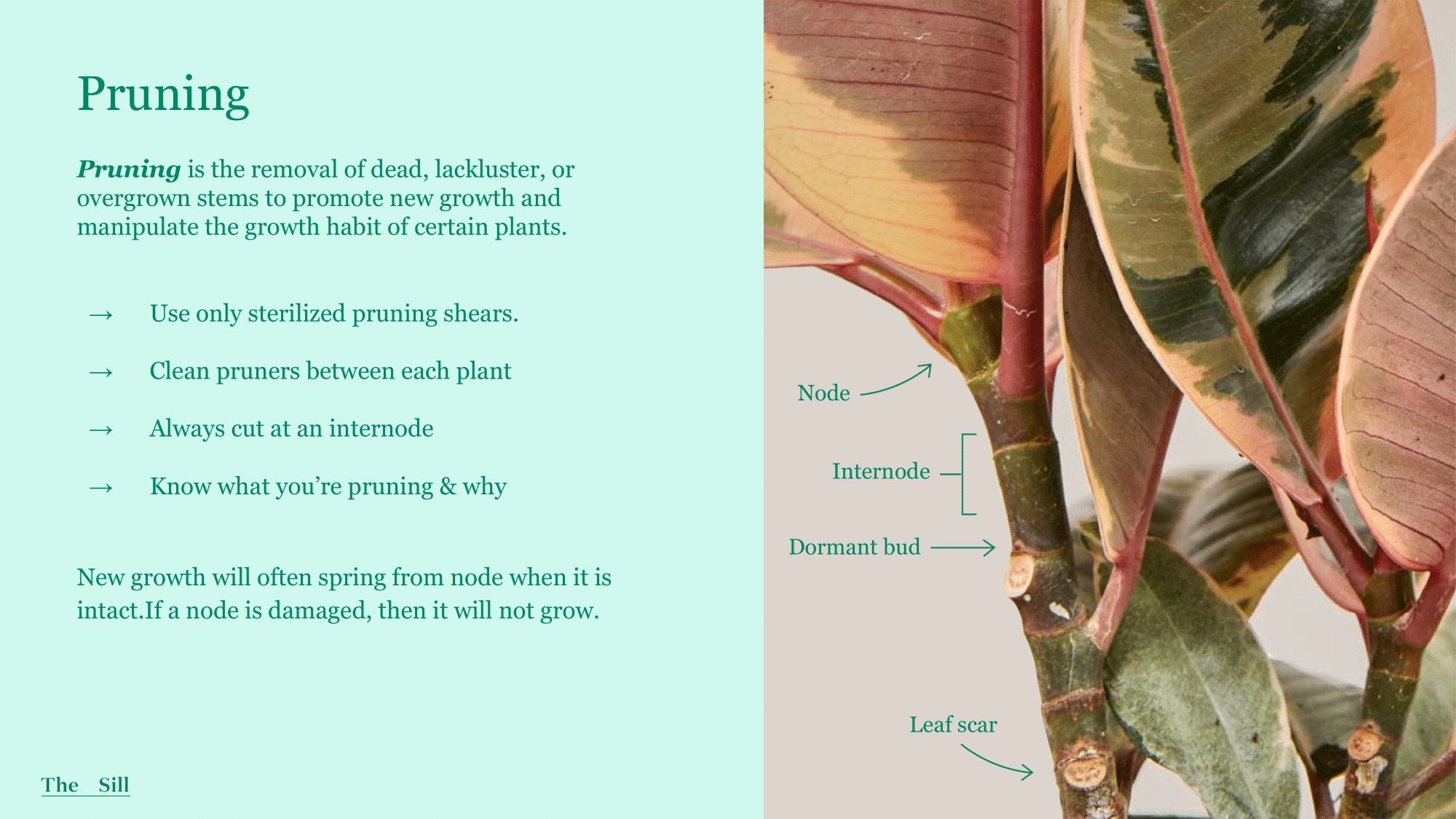
Pruning
- Pruning - Can help to control size/shape of a plant, stimulate growth, encourage bushiness, open the canopy, or just to remove infected or lackluster foliage. Best time to prune is during the growing season to encourage growth or branching, but pruning to remove dead foliage is safe to do year round.
- Pruning shears - Pruners have more precision at cutting a clean angle compared to household scissors.
- Cleaning - Can clean with rubbing alcohol, or dish soap in hot water. Wire brush helps to remove dirt or rust.
Know what you’re pruning:While pruning can be done to remove dead foliage, it’s not necessary for all plants to encourage growth or even branching depending on growth habit. Plants that wouldn’t produce lateral growth from pruning include Snake plants, ZZ, Peace lilies, Calatheas, Spider plants, Bromeliads, BNF, etc.
- Other plants that can benefit from pruning to facilitate growth include Pothos, Philodendron, Dracaena, Ficus, Hoyas, Peperomias, Begonias, etc.

Pruning Leaves
Pruning leaf edges doesn’t improve the health of a plant and is purely for aesthetics.

Pruning Roots
Foliage pruning will need to be considered for mass root-pruning.

